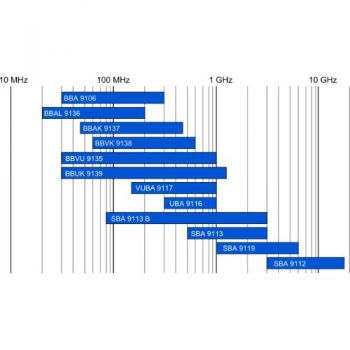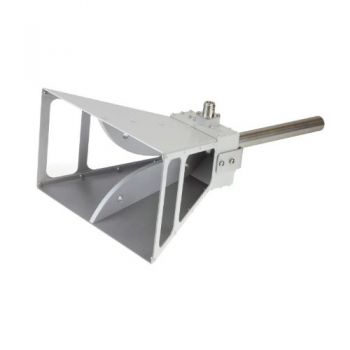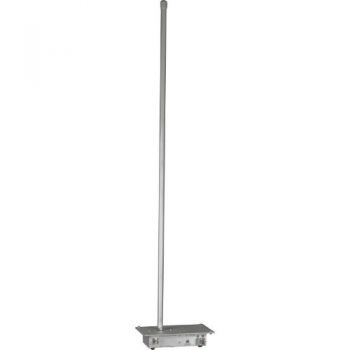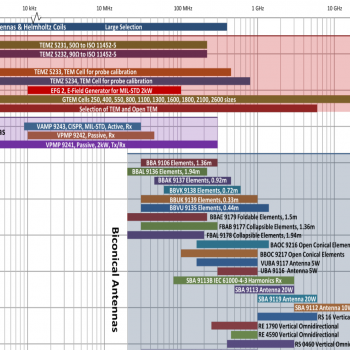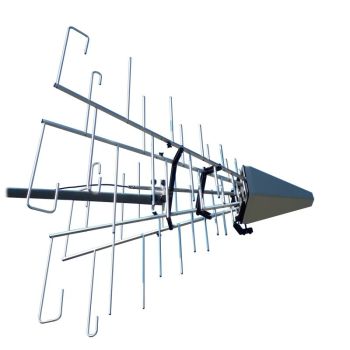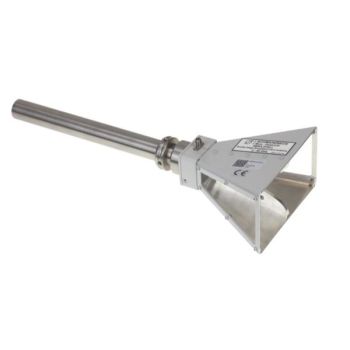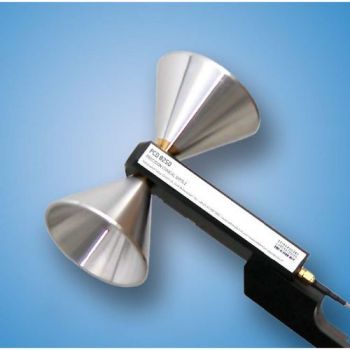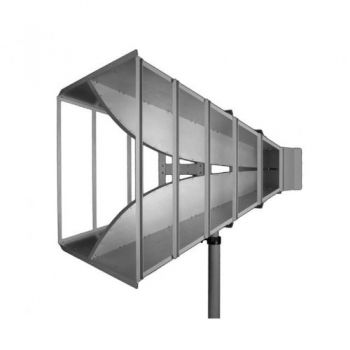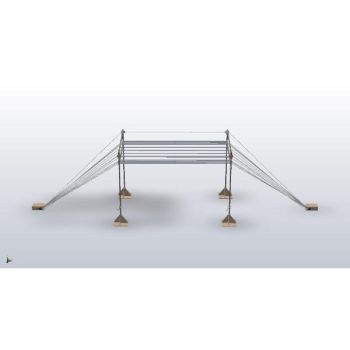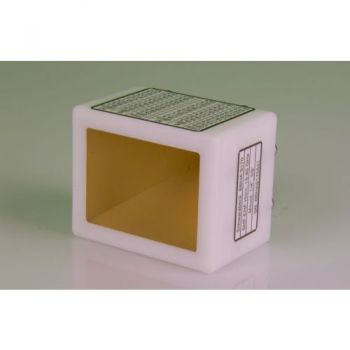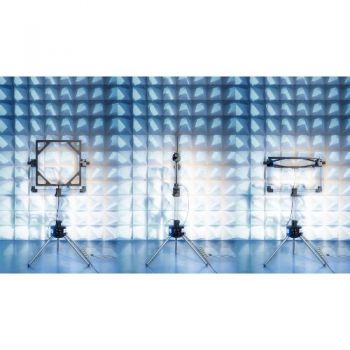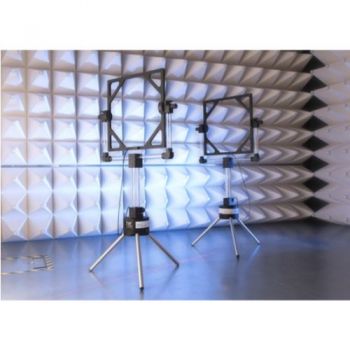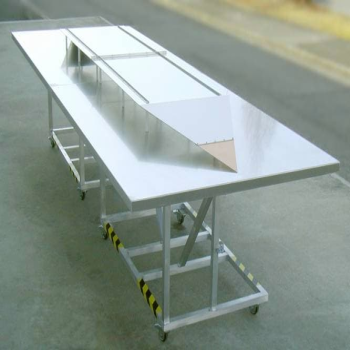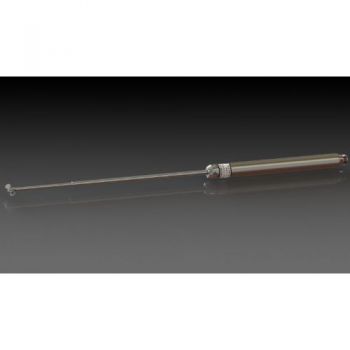
SBA 9112, 1 to 18 GHz, Small Biconical Microwave Antenna
- Small biconical microwave antenna
- (1) 3 - 18 GHz
- Compliant with CISPR 16-1-4 for site validation above 1 GHz
- Including transport case
- 10 W
SBA 9112 Microwave Biconical Broadband AntennaThe SBA 9112 was designed because of the worldwide unavailability of omnidirectional or dipole-like broadband antennas operating above 3 GHz. In combination with the SBA 9113, a frequency range from 0.5 to 18 GHz can be covered with excellent antenna performance. Accepting some limitations (i.e. Antenna Factor and VSWR increase, symmetry reduction) the SBA 9112 can be used from 1 GHz on. The validation of test sites with commonly used Microwave antennas (e.g. Log.- Per. or Horn Antennas) leads to insufficient results since these directive gain antennas with concentrated directional patterns do not take the test site characteristics into account.
Application The typical applications of the microwave biconical Antenna are the evaluation of test sites, the (frequency selective) field strength measurement, and the generation of defined field strength (e.g. ERP or EIRP). Thanks to the wide bandwidth there is no need for a time-consuming change of the antenna elements as required when operating with tuned half-wave dipoles. The biconical elements allow a continuous sweep over the complete frequency range. Because of the dipole-like directional pattern, the fixed phase center, and the high power handling capability the SBA 9113 may replace tuned half-wave dipoles in many applications. The SBA 9112 is not intended for emission testing with very low limits, horn, and Log.-Per. Antennas are better matched for this purpose because of their better antenna factor. A typical application of the SBA 9112 is the use as a (highly linear) broadband nearfield probe thanks to its small dimensions. Insertion of an attenuator is advisable if the equipment presents a high internal SWR (e.g. in the 0 dB position of an internal step attenuator. In this case, the attenuation must be added to the antenna factor (dB/m) or subtracted from the gain (dBi, dBd) The VSWR depends on environmental reflections. |



